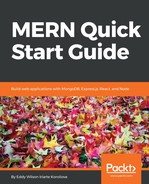Routing refers to how an application responds or acts when a resource is requested via an HTTP verb or HTTP method.
HTTP stands for Hypertext Transfer Protocol and it's the basis of data communication for the World Wide Web (WWW). All documents and data in the WWW are identified by a Uniform Resource Locator (URL).
HTTP verbs or HTTP methods are a client-server model. Typically, a web browser serves as a client, and in our case ExpressJS is the framework that allows us to create a server capable of understanding these requests. Every request expects a response to be sent to the client to recognize the status of the resource that it is requesting.
Request methods can be:
- Safe: An HTTP verb that performs read-only operations on the server. In other words, it does not alter the server state. For example: GET.
- Idempotent: An HTTP verb that has the same effect on the server when identical requests are made. For instance, sending a PUT request to modify a user's first name should have the same effect on the server if implemented correctly when multiple identical requests are sent. All safe methods are also idempotent. For example, the GET, PUT, and DELETE methods are idempotent.
- Cacheable: An HTTP response that can be cached. Not all methods or HTTP verbs can be cached. A response is cacheable only if the status code of the response and the method used to make the request are both cacheable. For example, the GET method is cacheable and the following status codes: 200 (Request succeeded), 204 (No content), 206 (Partial content), 301 (Moved permanently), 404 (Not found), 405 (Method not allowed), 410 (Gone or Content permanently removed from server), and 414 (URI too long).
